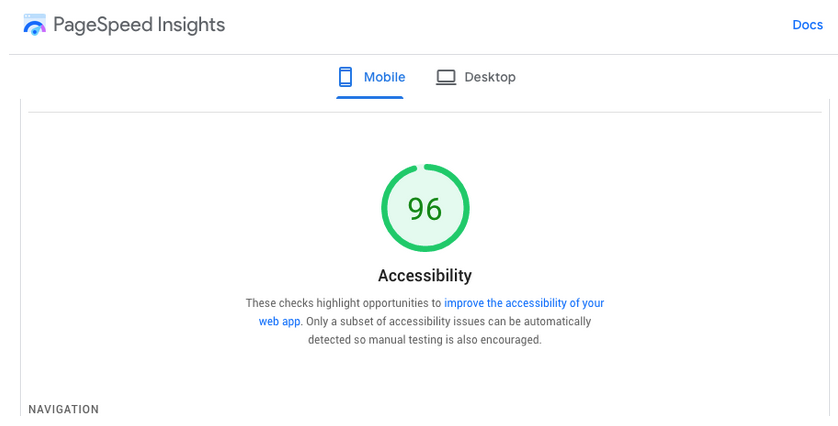
According to the CDC, one in four adults have a disability. The NIH has estimated that 6% of adults have impaired vision in some way. Accessibility is important for your website’s audience, performance, and should be a part of your content strategy. Let’s take a moment to access your website’s accessibility!
Simply put, accessibility is the removal of barriers to the world wide web for people who have physical or social disabilities. An example of this is if you have ever heard your older family members complain about how small elements are on mobile devices. Or perhaps a website was not loading properly on your phone due to lack of signal? These are some of the types of barriers we need to try to remove so that people have access to the data they need.
The gamut of physical disabilities ranges from an older person to blind or deaf individuals as well as people who lack mobility or are missing limbs. There are also social barriers such as low bandwidth due to social-economic factors that we need to take into account if we are truly trying to remove barriers for all people of the world.

Inset: Assistive technology products
Thankfully, many of the same methods that provide accessibility come hand-in-hand with practical best practices already. Search Engine Optimization (SEO) and recent coding standards already prioritize good Accessibility.
It turns out when website content is formatted properly, it can play nicer with algorithms, machine learning and other software — such as the software that people with disabilities use to help them navigate around, read out loud, make bigger and etc.
From our experience making websites, this is what we refer to as the starting point for both SEO and Accessibility. Following the best practice guidelines to get the most out of the website without doing extra work.

Inset: Google Page Insights Accessibility compliance result
For some companies, their audience might require a more advanced and sophisticated Accessibility strategy. Organizations that deal with education, healthcare and public services require that extra touch to make their website exceptionally well adapted.
When that is part of the objective of the website, we recommend treating Accessibility like a goal in of itself. That means achieving compliance from the proper authorities, including Accessibility as a checkpoint item when approving content, defining a minimum acceptable level of Accessibility for the project, etc.
Making the effort for exceptional Accessibility compliance is work in of itself and it should be agreed upon by the project leaders before the project starts. Westminster uses a code library that is able to satisfy most Accessibility standards from just adapting best practices for design and development. Going beyond is possible as long as we can define what that specifically is and how it fits into the administration of the website.
Curious to how your website is performing or interested in building a website project that is Accessible? Contact Amanda Ray to get the conversation started.